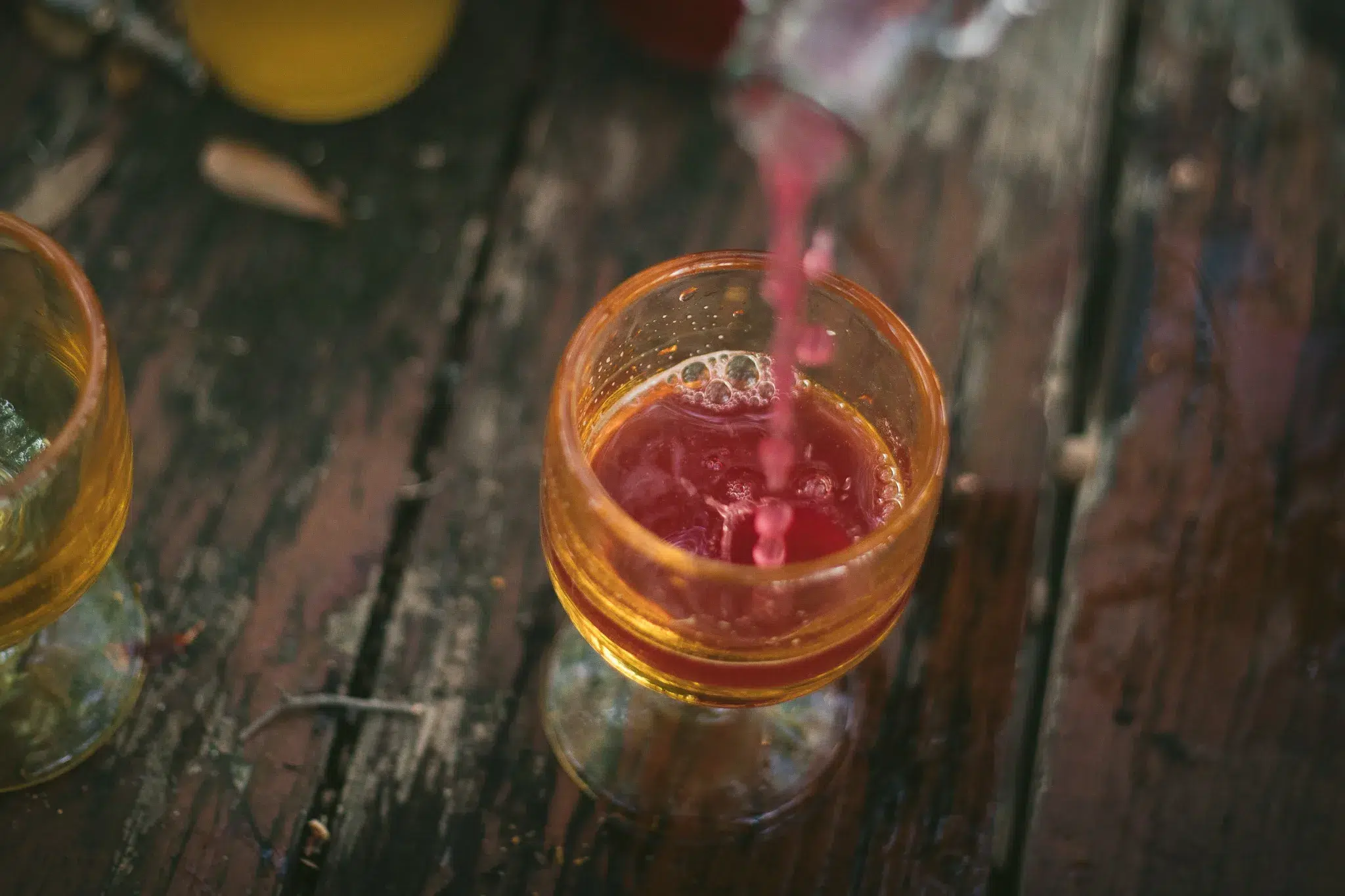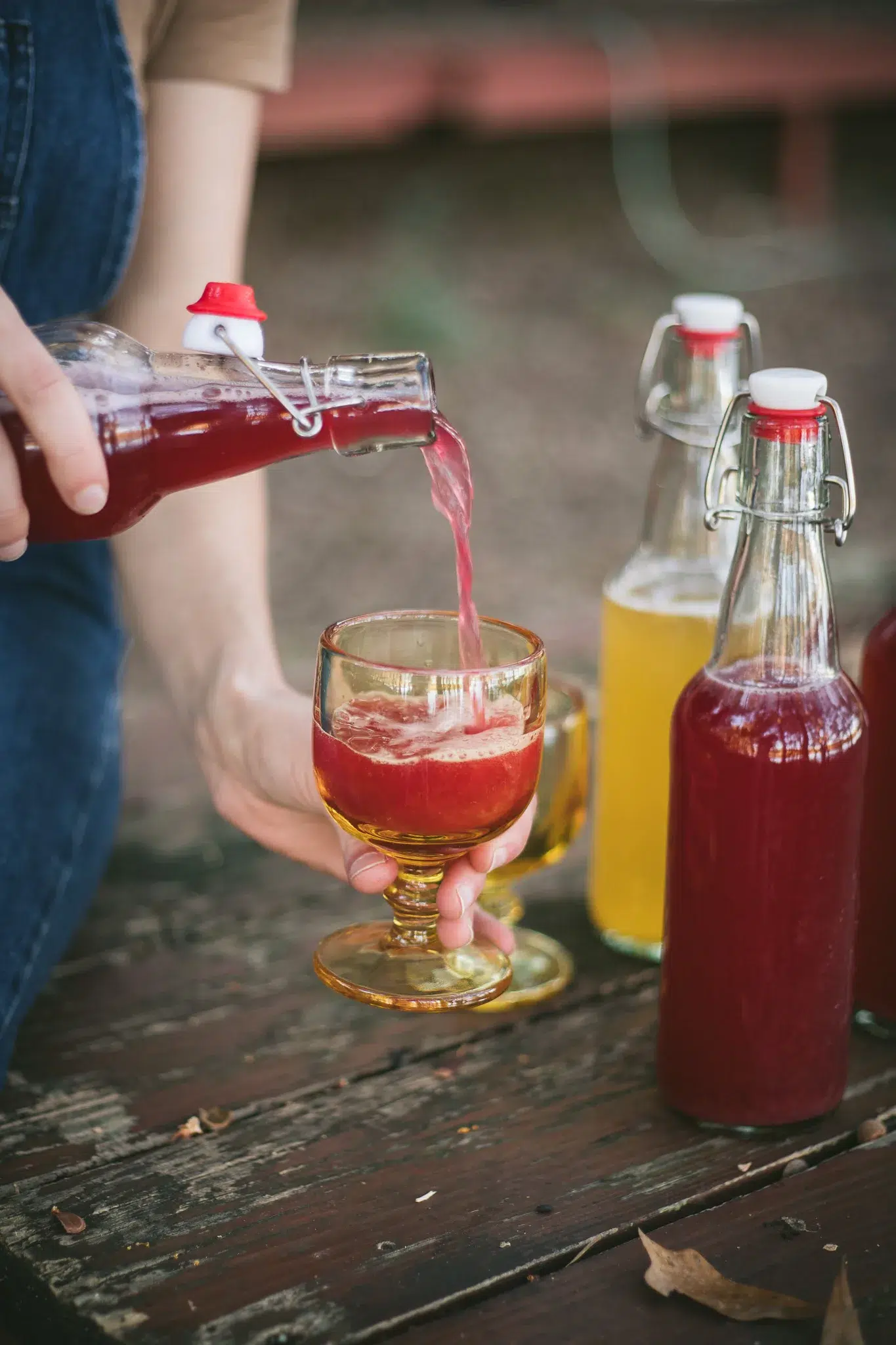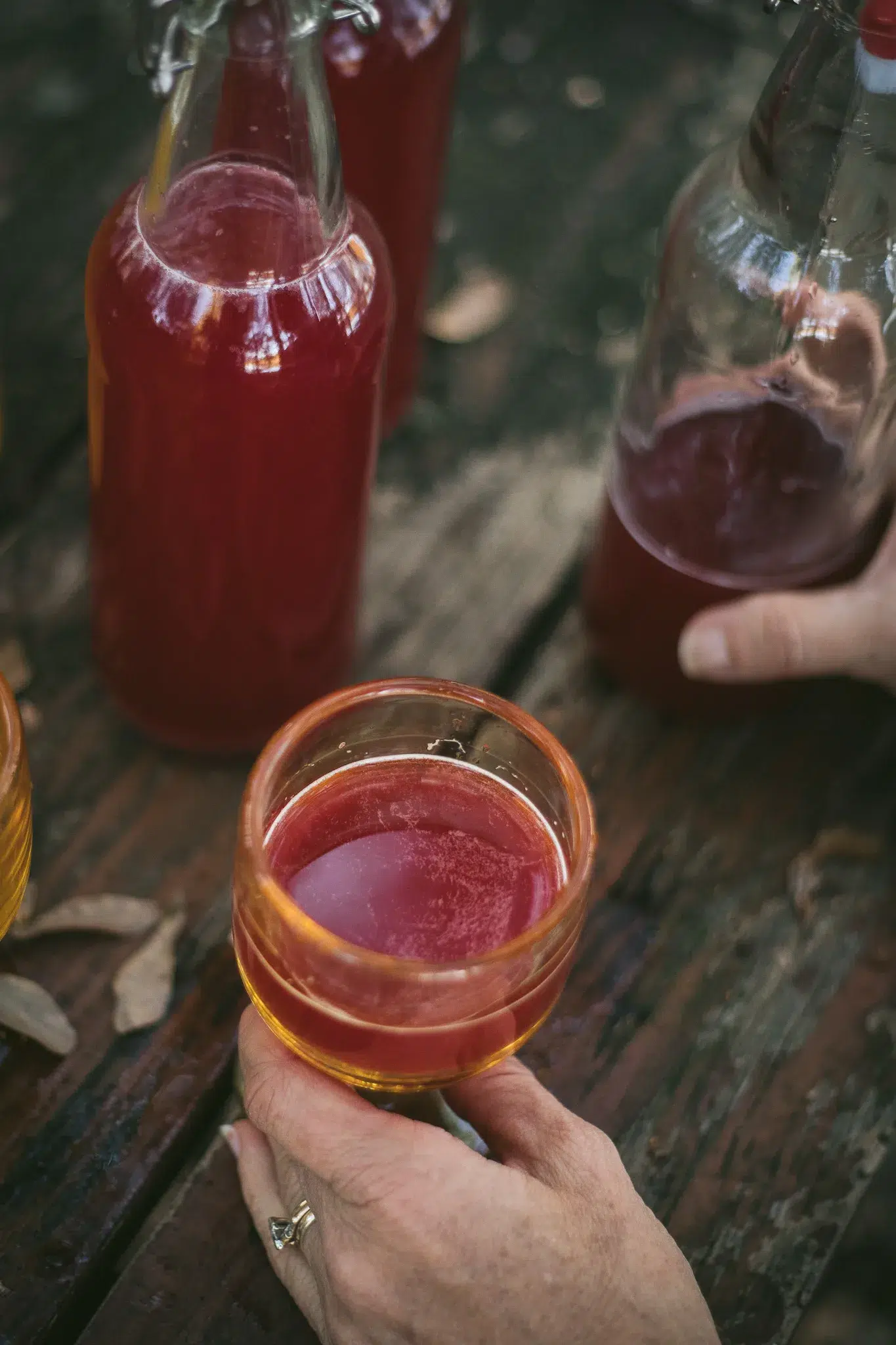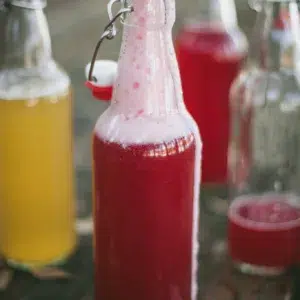
It’s no secret that store-bought kombucha isn’t cheap. Usually, around three dollars is about the lowest I can find at my local grocery store, but usually, kombucha costs more than that. This past spring, when my kombucha bill started to rack up, I suddenly had a realization, as I do with many things: “I could make this!”, I exclaimed one day after reading the ingredients of my favorite kombucha. Just like that, my kombucha-making journey began. After a few small kombucha bombs (yes, one exploded all over my kitchen) and some strange flavors, I have finally honed a system to make the perfect green tea kombucha.
One of my favorite things about making kombucha is that it feels like I’m conducting science experiments in my kitchen. Exploring carbonation, temperature, and yeast is so much fun! I find that green tea kombucha in particular is a lovely canvas for lots of delicious flavor combinations. If you enjoy experimenting in the kitchen and miss the chemistry lab a little bit, this will be your new favorite project.
This post contains affiliate links, which means I make a small commission at no extra cost to you. You can view my Privacy Policy Here.
Please read this before you continue:
This blog will teach you how to make green tea kombucha with a few simple ingredients. In order to get the most from it, I would recommend you:
- Read the entire blog before attempting the recipe. I know it’s tempting to skip straight to the recipe, but all this information will really help you. Kombucha is a delicate process where many things can go wrong, so you’re going to need as much information as possible.
- Be prepared with the correct tools and ingredients. Before you start be sure you have the right jars, bottles, SCOBY, tea, and anything else you will need.
- Give it a chance! I know the process seems overwhelming but give this recipe a chance and the results will undoubtedly surprise you.
Supplies you will need for this recipe and why
- Filtered water is essential ~The British Berkefeld is the filter we use and love!
- 1 Large jar, three liters or larger
- This is the jar you will ferment your kombucha in
- A high-quality, organic, green tea
- One tea bag usually weighs about 2 grams. You can weigh out and use loose-leaf tea or you can use bagged tea
- Six 16 oz fermentation pop-top bottles
- A fine mesh sieve
- These funnels for pouring and filtering the kombucha
Why use green tea in kombucha?
I love using green tea for this kombucha because it has a lighter flavor and much less caffeine than black tea. Additionally, green tea has many health benefits making it an obvious choice for kombucha.
Temperature matters, a lot
During the fermentation process, temperature has a great impact on the outcome of your kombucha. Warmer temperatures speed up fermentation and cooler temperatures slow it down. This means that making kombucha will vary by season and the temperature of your kitchen. Therefore, there cannot be one exact way to follow this recipe as the results will vary by your individual temperature situation.
This process will require some attentive observation
Unfortunately for recipe rule followers, this recipe will require you to make a few judgments based on temperature, smell, and taste. You cannot merely follow this recipe exactly for a perfect result, you will need to be an active participant in the process.


What is a SCOBY?
SCOBY stands for symbiotic colony of bacteria and yeast. This is the bacteria that will ferment your tea into kombucha. It’s very interesting looking and can be stored in a jar in your fridge. A SCOBY can last for a while floating in unflavored kombucha in a jar in the fridge. Every time you use the SCOBY, it will grow new layers.
Where can I find a SCOBY?
The best way to find a SCOBY is through someone you know. I would recommend reaching out to your community: church, school, neighborhood, friends, CSA, farmers market, or local homesteading family to find one. If you cannot find a SCOBY in this way, you can try to find one on the internet. While you cannot assure the quality of a SCOBY bought online, this is a good option in a pinch.
What is kombucha starter liquid?
The kombucha starter liquid is the plain kombucha you make before adding flavors and carbonation. You will remove this liquid from every kombucha batch you make and use it to store your SCOBY. When you are ready to make kombucha again, you can use this starter liquid with your SCOBY. If you don’t have enough starter liquid for whatever reason, you can buy plain unflavored kombucha from the store.
How to flavor green tea kombucha
You can use almost any fruit or herbs to flavor your kombucha. I like to add whatever flavors are in season at the time to mine. In the summer I mashed strawberries and basil in a bowl and added it to my green tea kombucha. In the fall you can grate apples and ginger into your kombucha. The important thing is that you add the flavors at the right time during the kombucha-making process, after the kombucha is done fermenting, but before the bottling.
My favorite kombucha flavor combinations:
- Strawberry basil
- Blackberry mint
- Strawberry thyme
- Peach mint
- Pomegranate orange
- Apple ginger
- Lavender Chamomile
How do I carbonate my kombucha?
Science time: kombucha is carbonated by a few factors: temperature, pressure, and sugar. At room temperature, the yeast in the kombucha eats the sugar to create carbon dioxide. If the kombucha is contained in a pop-top bottle, the carbon dioxide has nowhere to go and eventually dissolves into the liquid, resulting in a fizzy beverage.
Explaining to Kombucha Process
STEP ONE: FERMENTATION
In this first step, we ferment the green tea using the SCOBY and starter liquid for 12-14 days
STEP TWO: FLAVORING
This step is about steeping your plain kombucha in flavor. Please see my notes on flavor for lots of ideas on how to do this. I like to add my flavoring agents to the kombucha and wait for about 2-4 days. I will usually taste the kombucha towards the end of this time to see if I like it.
STEP THREE: BOTTLING
Bottling is essential if you want a fizzy result. I strain my kombucha from the flavorings and any little chunks of scoby before adding to bottles using a funnel. Leave these bottles on the counter for another few days before placing in the fridge!

Green Tea Kombucha Recipe
Ingredients
- 16 grams of organic green tea or 8 tea bags
- 12 cups of water
- 1 cup of sugar
- 1 cups kombucha starter
- flavoring of your choice see the above notes about flavoring
Instructions
- Heat water in a large heavy bottom pot. Only heat until the water is producing steam. Remove from heat
- Add tea bags and sugar. Steep for a few minutes, taste it and see how strong you prefer. Adjust as necessary
- Allow the tea to cool to room temperature
- Pour in a large jar
- Add (1 cup) starter liquid and scoby to jar- do not add SCOBY or starter until the tea is at room temperature because heat will kill the bacteria of the SCOBY!
- Cover the jar but do not seal it tightly. You can use a small jar cover cloth or something similar.
- Rest in a cool dark place for 12-14 days
- Start tasting the kombucha on the 12th day to test flavor
- Ferment longer if it doesn't taste strong enough
- Remove your scoby and at least 1 cup of the kombucha starter liquid from the jar
- Store your scoby and the starter liquid together in a jar in the fridge until ready to make another batch
- Add your flavoring to the kombucha jar. Remember to make sure all elements are at room temperature before adding to the kombucha.
- Leave your jar again on the counter covered but not tightly sealed for 2-4 days
- At this time I like to taste the kombucha every day to see how I like the flavor.
- After a day or two a seal will start to form at the surface of your buch, that’s totally normal and a natural thing. The kombucha is sealing itself off from bacteria and other outside contaminants
- When you like the flavor, strain out all of your fruits and flavorings with a fine mesh sieve. These can be composted.
- Pour kombucha into bottles using a pour spout. LEAVE PLENTY OF ROOM AT THE TOP OF YOUR BOTTLE!!!!! otherwise you will create a small bomb. Trust me, I accidentally did this several times
- Leave on the counter for 2-4 days. Do not touch, do not disturb
- Without opening or disturbing, place bottles in the fridge for 5-10 hours.
- Now you can gently open your kombucha. Remember to open your kombucha (for the first time) outside or over your sink, using a cloth to cover the opening top in case it bubbles up. Taste your kombucha to see if you like it
- If you want it to be more carbonated, leave it out on the counter for another day or two
Leave a Reply